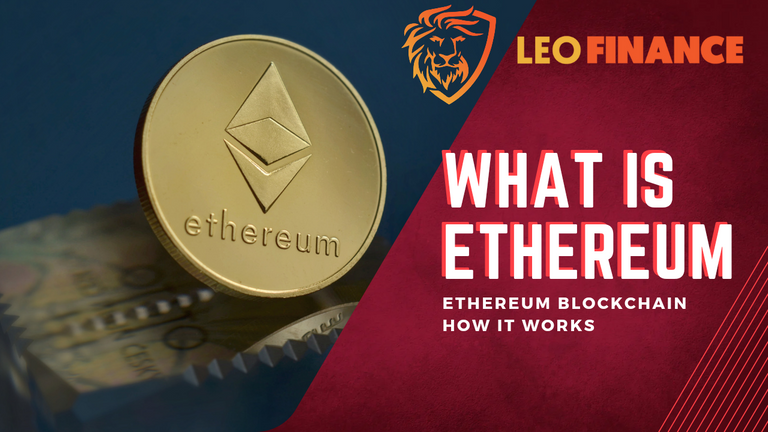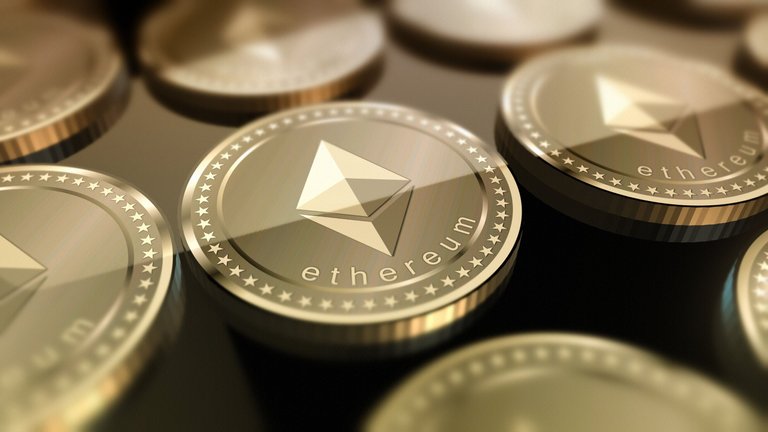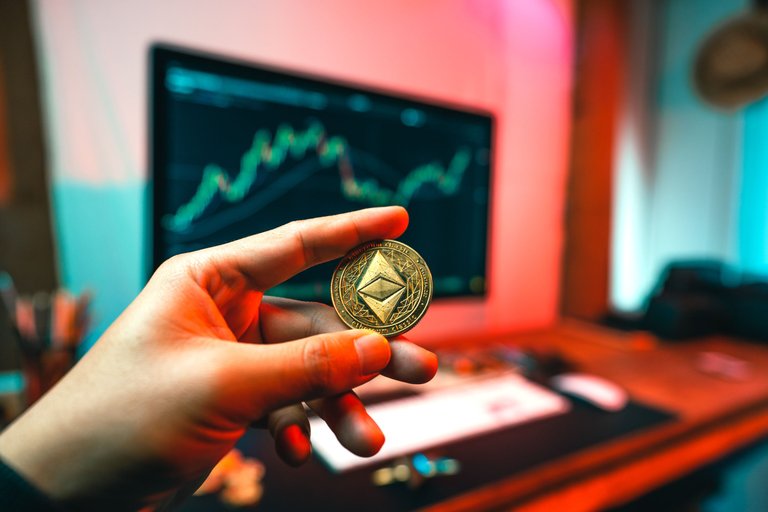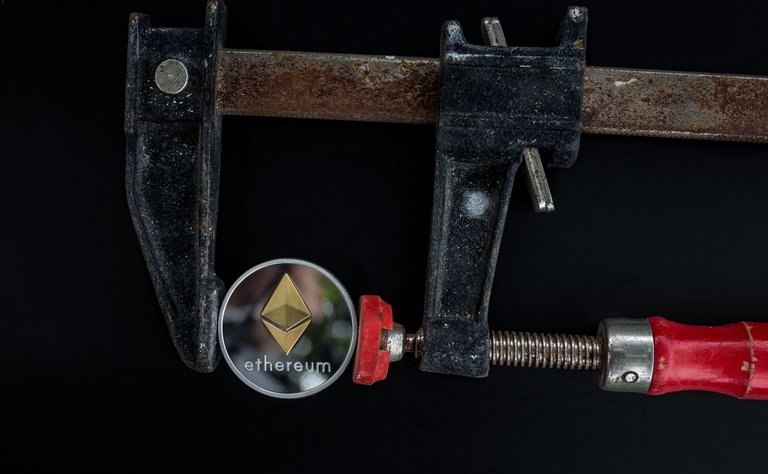What is Ethereum and How it works | Ethereum Blockchain | Ethereum against Bitcoin

Hello Guys,
Hope everyone is well. Today I am going to write about an important topic. Yes, it is nothing else, Ethereum. Over the last 2 days I have collected extensive information about what is Ethereum by visiting so many sources. In fact, I myself got so much knowledge about this. I was able to gain a lot of knowledge on various topics for the Zealy Campaign. I have completed many quests in this campaign which has been running for 36 days, and I am still doing it. The most important thing is that through this campaign I have gained extensive knowledge about everything. So anyway, through this post I will try to give you some information about What is Ethereum and How does it work. And I will try to tell how it can play a role in our financial lifestyle. I hope you can learn more from this post. So let's get started.
What is Ethereum?
Ethereum is a network, made up of many communities, and a set of tools which enable people to transact and communicate without being controlled by a central authority. There is no need to hand over all your personal details to use Ethereum - you keep control of your own data and what is being shared. Ethereum has its own cryptocurrency called Ether (ETH) which is used to pay for certain activities on the Ethereum network. The intent of Ethereum is to merge together and improve upon the concepts of scripting, altcoins and on-chain meta-protocols, and allow developers to create arbitrary consensus-based applications that have the scalability, standardization, feature-completeness, ease of development and interoperability offered by these different paradigms all at the same time. Ethereum does this by building what is essentially the ultimate abstract foundational layer: a blockchain with a built-in Turing-complete programming language, allowing anyone to write smart contracts and decentralized applications (DApps) where they can create their own arbitrary rules for ownership, transaction formats and state transition functions. A bare-bones version of Namecoin can be written in two lines of code and other protocols like currencies and reputation systems can be built in under twenty. Smart contracts, cryptographic boxes that contain value and only unlock it if certain conditions are met, can also be built on top of their platform, with vastly more power than that offered by Bitcoin scripting because of the added powers of Turing-completeness, value-awareness, blockchain-awareness and state.
The Beginning of Ethereum
Ethereum was founded by Vitalik Buterin and Gavin Wood in 2013. While Vitaly "Vitalik" Buterin, the Russian-Canadian front-man for Ethereum was actually a co-founder, he’s definitely the face of the project. Vitalik became involved in cryptocurrency quite early on the scene, co-founding Bitcoin Magazine in 2011 before making Ethereum a reality by eventually launching the network in 2015. The Ethereum platform is the base on which dApps are built, hosting what are known as smart contracts. Smart contracts are a set of code that carries out a list of instructions, running immutably on the blockchain. Think of smart contracts as code replacing a human third party required to act as an intermediary or verify something on an application. They’re what gives Ethereum its power and sets it apart from Bitcoin and other purely money driven cryptocurrencies. While Bitcoin is simply a payments network that is used to transfer value, Ethereum is a base layer for the entire decentralised internet to be built on top of.

Ethereum Blockchain
Ethereum, like other cryptocurrencies, involves blockchain technology. Imagine a very long chain of blocks. All of the information contained in each block is added to every newly-created block with new data. Throughout the network, an identical copy of the blockchain is distributed. This blockchain is validated by a network of automated programs that reach a consensus on the validity of transaction information. No changes can be made to the blockchain unless the network reaches a consensus. This makes it very secure. Consensus is reached using an algorithm commonly called a consensus mechanism. Ethereum uses the proof-of-stake (PoS) algorithm, where a network of participants called validators create new blocks and work together to verify the information they contain. The blocks contain information about the state of the blockchain, a list of attestations (a validator's signature and vote on the validity of the block), transactions, and much more. For Ethereum, network security and verification of transactions, cryptography is used in each blockchain transaction.
Ethereum Mining
Mining is using computers to solve complex mathematical equations, in essence by guessing the solution. The result of this 'mining' is to confirm each blockchain transaction and add new blocks to the blockchain which is the basis of the system. The reward for participation in this activity is cryptocurrency tokens which in the Ethereum ecosystem are called 'Ether' (ETH). The process of creating a block of transactions to be added to the Ethereum blockchain is referred to as mining. Ethereum currently uses a proof-of-work (PoW) blockchain but is moving to proof-of-stake (PoS) with Ethereum 2.0 for scalability purposes and a more environmentally friendly approach. Ethereum miners are computers that run the software and use their time and processing power to process transactions and create blocks. Network participants must ensure that everyone agrees on sequencing transactions in decentralized systems like Ethereum. Miners assist in this by generating blocks by solving computationally challenging riddles, thereby safeguarding the network from attackers.

Ethereum Accounts
In Ethereum, the state is made up of objects called accounts, with each account having a 20-byte address and state transitions being direct transfers of value and information between accounts. An Ethereum account contains four fields:
- The nonce, a counter used to make sure each transaction can only be processed once
- The account's current ether balance
- The account's contract code, if present
- The account's storage (empty by default)
Ether is the main internal crypto-fuel of Ethereum, and is used to pay transaction fees. In general, there are two types of accounts: - Externally owned accounts: Controlled by private keys.
- Contract accounts: Controlled by their contract code.
An externally owned account has no code, and one can send messages from an externally owned account by creating and signing a transaction. In a contract account, every time the contract account receives a message its code activates, allowing it to read and write to internal storage and send other messages or create contracts in turn.

Ethereum in Opposition to Bitcoin
Ethereum is often compared to Bitcoin. While the two cryptocurrencies have many similarities, there are some some important distinctions. Ethereum is described by founders and developers as “the world’s programmable blockchain,” positioning itself as an electronic, programmable network with many applications. The Bitcoin blockchain, by contrast, was created only to support the bitcoin cryptocurrency. The maximum number of bitcoins that can enter circulation is 21 million. The amount of ETH that can be created is unlimited, although the time it takes to process a block of ETH limits how much ether can be minted each year. The number of Ethereum coins in circulation is more than 122 million. Another significant difference between Ethereum and Bitcoin is how the respective networks treat transaction processing fees. These fees, known as gas on the Ethereum network, are paid by the participants in Ethereum transactions. The fees associated with Bitcoin transactions are absorbed by the broader Bitcoin network. Developers can build on Ethereum to create a unique Ether-compatible token for each DApp, called an ERC-20 token. While the process isn’t perfect, this means all Ethereum-based tokens are technically interoperable. Bitcoin’s network is just for Bitcoin.

Advantage and Disadvantage of Ethereum
To have a complete understanding of Ethereum we must be aware of its advantages and disadvantages.
So at this stage first I will highlight the advantages of Ethereum :-
- One of the biggest features of Ethereum is Smart Contracts.
- Ethereum is fully decentralized & transparent.
- To perform transactions on the network one needs to pay Gas fees which avoids the network from downtime.
- Decentralized Finance (DeFi) is so hot right now and it dominated the crypto space in 2020.
- Ethereum Foundation led by Vitalik Buterin (Co-founder, Ethereum) & its expanding developer community are the most important assets Ethereum has.
- Ethereum has multiple use cases like the creation of DAO (Decentralized Autonomous Organizations), ERC-20 based tokens, Stablecoins, NFTs etc.
Now I am going to highlight the Disadvantage of Ethereum :-
- Ethereum has been struggling with scalability issues & poor user experiences like High transaction costs (GAS Fees) and longer transaction times.
- To solve the scalability issues Eth is undergoing a change from 'Proof of Work' to 'Proof of Stake' mining.
- Ethereum undergoes frequent changes and it continues to evolve since it's an experiment.
- Learning curve is steep since the technology is new.

The basics information of Ethereum are detailed above. Apart from these, there are wider issues related to it that we should know about. If you want to invest your precious money in Ethereum, do your due diligence on it first. I have gathered information and knowledge from several sources to write this article. I am publishing them below for your convenience.
I hope you will benefit from this article. If you want to know anything from me, please submit your necessary questions in the comment box. I will try to answer your questions as best as possible. Thanks for reading my post for so long. Don't forget to let me know what kind of post you expect from me. Thanks everyone, goodbye.

- Check my Tweets on Tweeter
- Read my Blogs on Hive
- Read my Threads on Leo Finance
- Check my Profile on Facebook
- Check my Profile on Instagram
- Connect me on Discord
- Connect me on Telegram
- Join Leo Finance Discord Server
- Join the Zealy Adoption Campaign (10K USD Prizepool

All rights reserved © @cyclopshive

Posted Using LeoFinance Alpha
Congratulations @cyclopshive! You have completed the following achievement on the Hive blockchain And have been rewarded with New badge(s)
Your next target is to reach 4250 upvotes.
You can view your badges on your board and compare yourself to others in the Ranking
If you no longer want to receive notifications, reply to this comment with the word
STOPCheck out our last posts: